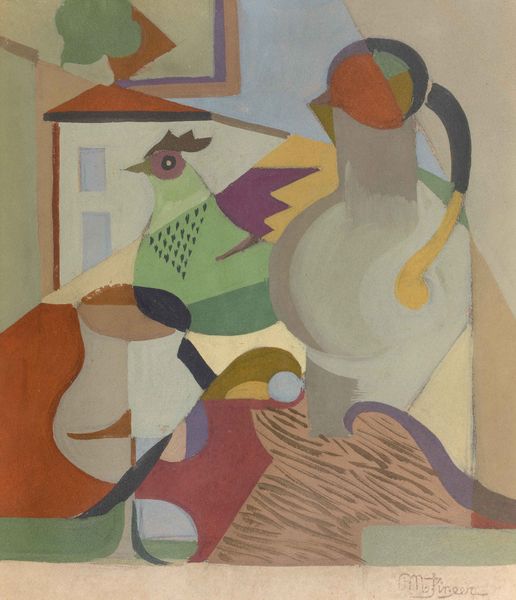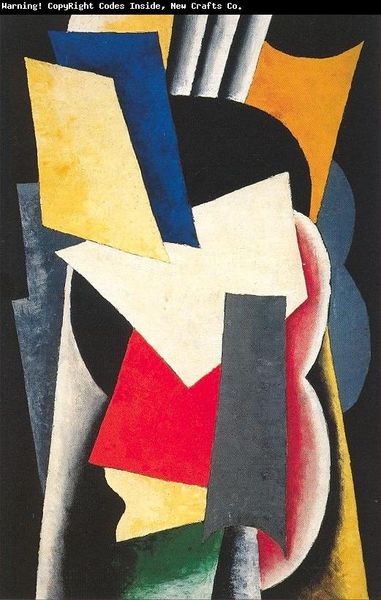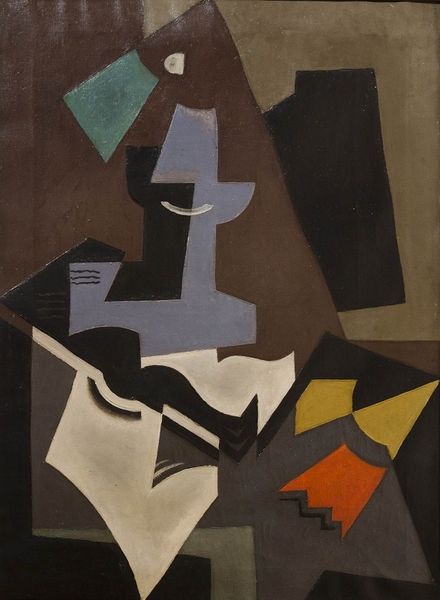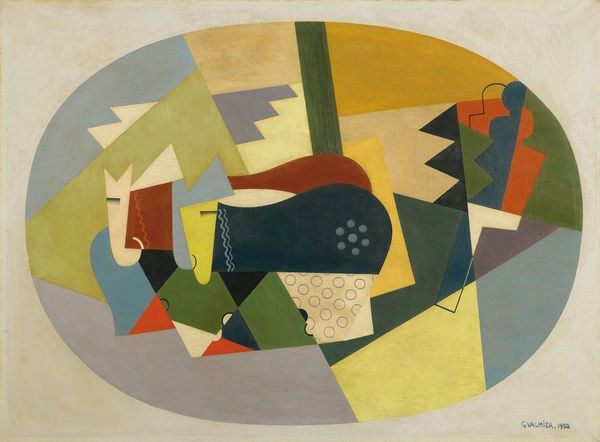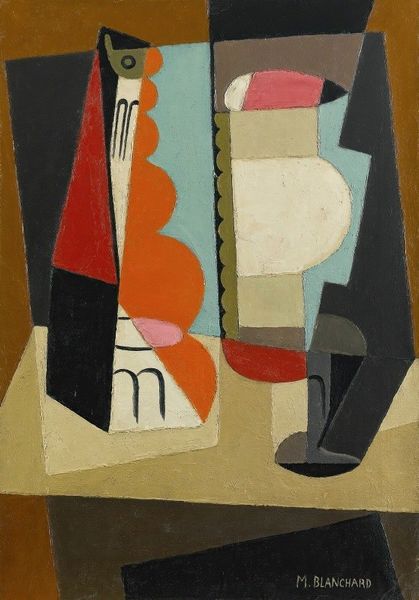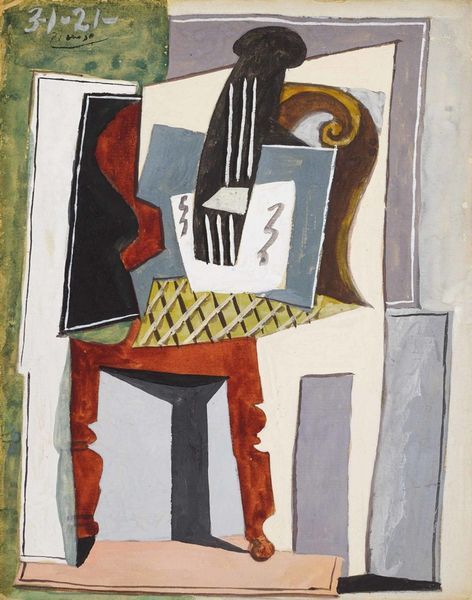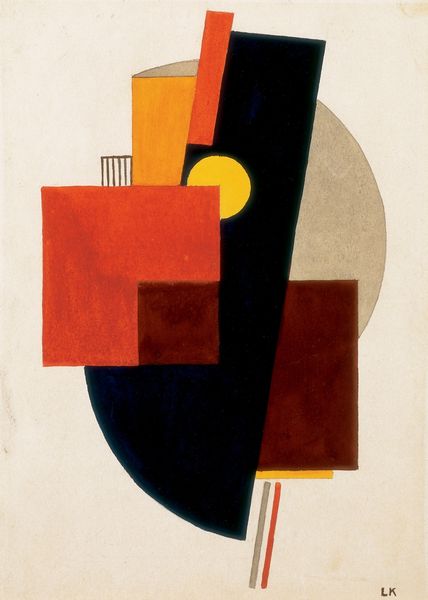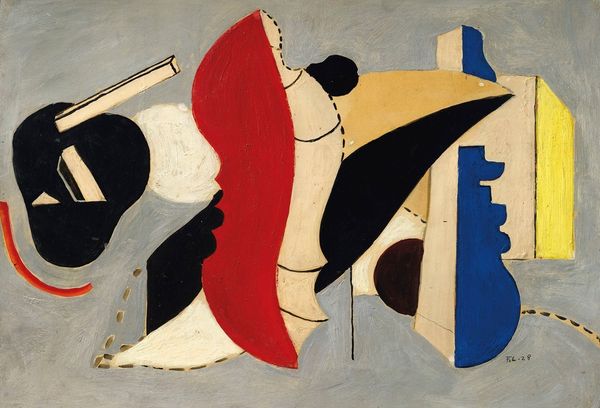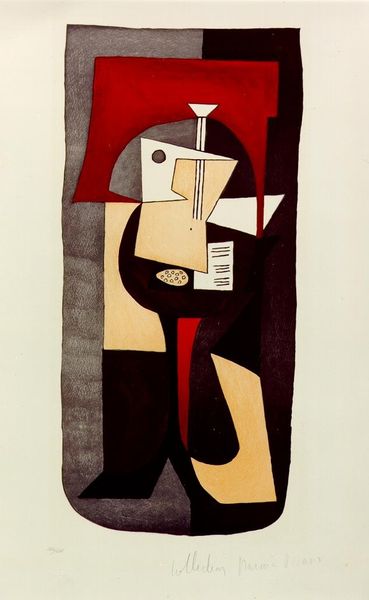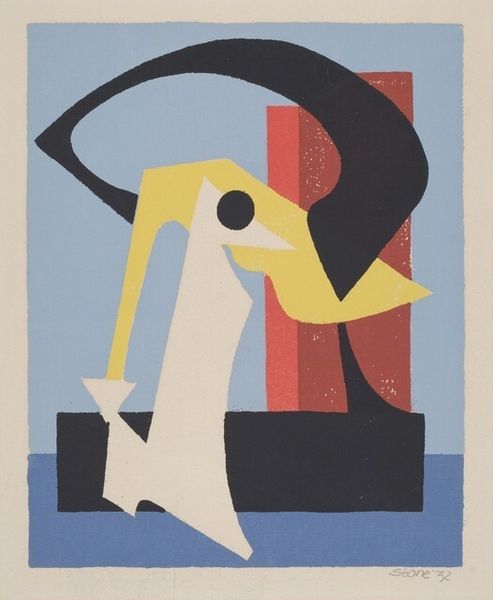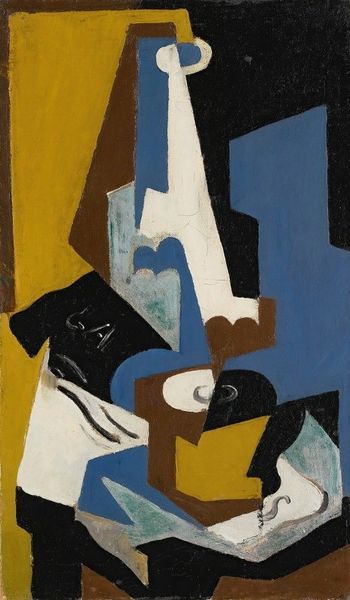
painting, print, paper
#
painting
# print
#
paper
#
geometric
#
abstraction
#
modernism
Dimensions: image: 53.02 × 35.56 cm (20 7/8 × 14 in.) sheet: 63.82 × 47.94 cm (25 1/8 × 18 7/8 in.)
Copyright: National Gallery of Art: CC0 1.0
Curator: This piece is titled "The First Act" by Russell Twiggs, circa 1950s. It’s a print on paper, exhibiting geometric and abstract elements. Editor: It strikes me as a vibrant composition. There is something playful, yet vaguely ominous, about the stylized figures. Curator: Twiggs' use of basic shapes—the rectangles, circles, and angled lines—creates a unique visual vocabulary. How do you view that vocabulary in relation to its historical context? Editor: Given the probable context of the 1950s, a period marked by Cold War anxieties and conformity, it seems plausible that Twiggs employed abstraction as a means of subtly challenging or questioning the era’s dominant socio-political structures. Curator: That reading fits well with what we know of other artists working in this era, moving from figuration towards something that suggested rather than illustrated. Looking at the printmaking process itself, it's likely the choice was driven by efficiency and reproducibility— perhaps aiming to reach a wider audience than unique paintings would allow. Editor: I'm curious to know more about the labor aspect. Did Twiggs handle every stage of production personally? Or were there studio assistants, possibly women, whose contributions might be undervalued today? Curator: Those are excellent questions. Investigating Twiggs’ working practices could reveal interesting insights. Moving back to the work, the color palette is quite restrained: a mix of red, blue, and blacks. I am interested in how these colours might inform the viewer's response? Editor: I agree. Red, a color so loaded with revolutionary meaning, against somber blacks suggests social and political turmoil simmering beneath the surface, don’t you think? Curator: Potentially. Or the artist was simply working with colors they could get. Without a way to access artist notes it’s difficult to say for sure, of course. But it reminds us to really question everything when encountering this type of modern work. Editor: I think you are right: It's precisely in those layers of production, technique and engagement that the piece retains its potency.
Comments
No comments
Be the first to comment and join the conversation on the ultimate creative platform.
